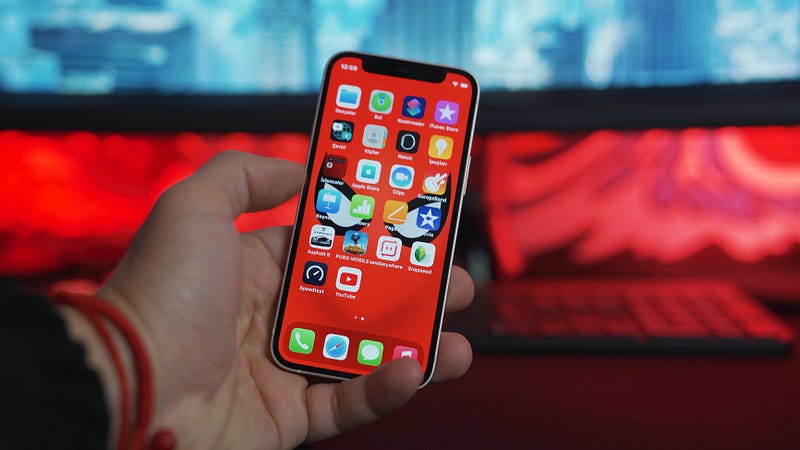How to Free Yourself from Obsessive Social Media Scrolling

Photo by Onur Binay on Unsplash
Don’t let social media companies hijack your life
When psychologists want to conduct conditioning research with animals, they often use a Skinner Box. It’s a small chamber with a lever and a delivery chute, usually tested with rats. When the rat presses the lever, food comes out of the chute.

Skinner’s research on YouTube, royalty-free.
This incentivizes the rat to pull the lever again. But the trick is that the food doesn’t come every time; it’s released randomly. So the rat learns that if it keeps pushing the lever, it might get something tasty.
So it pushes, and pushes, and then pushes some more until it’s satisfied with the reward of tasty food.
Sadly, this is the predicament of a lot of humans.
We’re the rats, our phones are the skinner box and huge bursts of dopamine through social media are the reward for pulling the lever, i.e. scrolling.
With every scroll, we expect something exciting to catch our attention. But it doesn’t happen all the time. Often you get to see something exhilarating. Other times, it’s the same old post you saw yesterday.
At any rate, this unpredictability is sufficient to get us hooked and keep scrolling. When I first tried social media, I too was hooked.
After a few months (or years) of using it, I realized what a labyrinth I was in. On questioning my behavior, I found a lot about the tricks social media companies use to keep us hooked. And with that, came the understanding of how I can free myself from this slavery.
Why We Can’t Stop Scrolling
Some people are really good at moderation. They can eat chocolate but stop at only a piece. They can post intermittently on social media without being distracted. And they can have dessert, “only once in a while.”
Most people, including me, are not like that. Most people have a hard time sticking to the vague principle of moderation. After all, who’s to decide what levels of consumption are healthy?
Nevertheless, it’s a tempting proposition because we get to decide what’s moderate and what’s excessive. Similarly, thinking we can handle the advanced level of behavioral engineering that goes behind social media apps, we are tricked into their game.
The first time we use it, we get a dopamine high. Dopamine is a chemical that’s released in our brains after every pleasure and reward. And it trains the brain to crave it again.
“With every photo you scroll through, the headline you read, or link you go to, you are feeding the loop which just makes you want more. It takes a lot to reach satiation, and in fact, you might never be satisfied,” says Susan Weinschenk, Ph.D., on Psychology Today.
Unfortunately, our brains don’t come with a “stop” button. It’s hard to stop once we’ve started. This is why you scroll long past the point of amusement or entertainment.
It’s not uncommon to find yourself watching something you never thought you’d watch, only to lament that hours, not minutes have passed by.
With the infinite scroll available in most social media apps, content never gets old. You keep getting a slew of information that hijacks your attention and makes you dumber every second.
Plus, the secret sauce of the whole game is your feed is personalized. This means, not only are you seeing interesting content in general but you’re also seeing content that you love — which makes it even harder to quit.
But don’t lament — these apps are made to be addictive. Thousands of engineers and designers are sitting behind the screen thinking about how they can keep your attention for ever-increasing periods of time.
Being upset with yourself is not going to help you at all. What’s going to help are the following tips.
Awareness Precedes Progress
I’ve probably said this a thousand times throughout my writings, but when it comes to breaking a bad habit, awareness always precedes progress.
It takes a certain amount of self-awareness to know that you have a problem before you can even start dealing with it. If you keep thinking mindless scrolling is harmless and that you can afford to be glued to the screen multiple hours a day, then no one can help you.
But if you’re aware and want to change, only then will any advice work.
Setup a Timer
Social media apps like Instagram now have a timer feature that lets you see how much time you’ve spent on the app. Plus, it allows you to set a reminder that goes off when you hit your target time for the day. If not, almost all smartphones now have a feature to let you manage your screen time.
This solves one of the major problems of social media addiction. When we’re so engrossed in scrolling for new posts, we forget what’s going on around us. We forget the tasks we planned for ourselves and the promises we made to finish them on time.
Reminders help to break that flow so you can snap out of that drugged state (let’s call a spade a spade).
Make Your Feed Less Interesting
The power of social media lies in its novelty served every few seconds to your brain. It seems there’s always something new to look at — and how can there not be? There are billions of people using these platforms.
Thankfully, they’ve given some power to the users to decide their preferences using which you can make your feed much less attractive. This can be done by simply unfollowing accounts that you don’t like or are toxic.
The fewer accounts you follow, the fewer posts you’ll see.
Move Your Body to Move Your Mind
When you’re in the loop of scrolling, it’s hard to break out except through a short, sudden burst of willpower.
The best way to apply this is to change what you’re doing physically. This is your counter-movement. Whenever you find yourself stuck in a loop, place your phone downward and walk to another room — keep your phone there and come back.
This is just one example. You can have your own counter-movement. Once you repeat it a few times it will become your default response to being stuck in a loop. Slowly, you will regain control of your behavior back from the hands of these apps.
Control Your Notifications to Control Your Time
If keeping you addicted to the app wasn’t enough, social media companies have long found a great way to distract you from whatever you’re working on, back to the app. Once you’re back on, they can take you in a hundred different directions.
The tool at their disposal is Notifications. These notifications are often designed to be red in color accompanied by a sound, making it impossible to ignore.
Fortunately, again, we can take matters into our hands by turning off these notifications. Not only for these apps but for all apps that you can.
Reducing your notification count overall will help you check your phone less, thereby reducing the chances of getting stuck in the scrolling loop. These apps can include email, messages, social media, games, news, etc.
Out of Sight, Out Of Mind
The golden rule to tackle compulsive usage of anything is to remove it from your environment. You can’t use it if it isn’t physically present. If you look back on your life, you will realize that at most times, your phone is within your hand’s reach.
You can reduce this time by keeping your phone in your bag, in another room, and so on. This makes it much less likely to get distracted. I’ve tried this several times and I can say from experience that it makes focusing on my tasks almost effortless.
‘Bleach’ Your Screen
The grayscale mode is my favorite trick for making the phone less attractive. To avoid switching it on every day, I’ve set a schedule for it. It starts at 00:00 am and goes on till 11:59 p.m. So essentially, my phone is colorless 24/7.
As we saw above, the colors used in applications are selected to optimize attraction. They’re not just random colors that look good. Turning on grayscale makes apps less eye-catching and can keep you from looking at them for longer.
Though it’s not a permanent solution, it can still nudge you in the right direction.
Go Cold Turkey
The best way of all, which I’ve opted for, is to remove these apps from your phone entirely. Contrary to popular thought, my life is not antisocial at all. I am much more focused, productive, successful (in many ways apart from material), and have healthier relationships without drama.
You can still access these websites from your desktop if you like but that requires enough extra steps that you’ll do it much less frequently.
Final Thoughts
The problem of mindless scrolling is not trivial at all. Many UX designers are seeing the use of psychological tactics in app development as an ethical issue. Perhaps they’re trying to get addicts, not users because it’s obviously good for business.
But we can’t sit and blame these companies while heartily wasting our lives on the screen. It’s crucial to take these matters into our hands. After all, our focus, concentration, willpower, and focus depend on it.